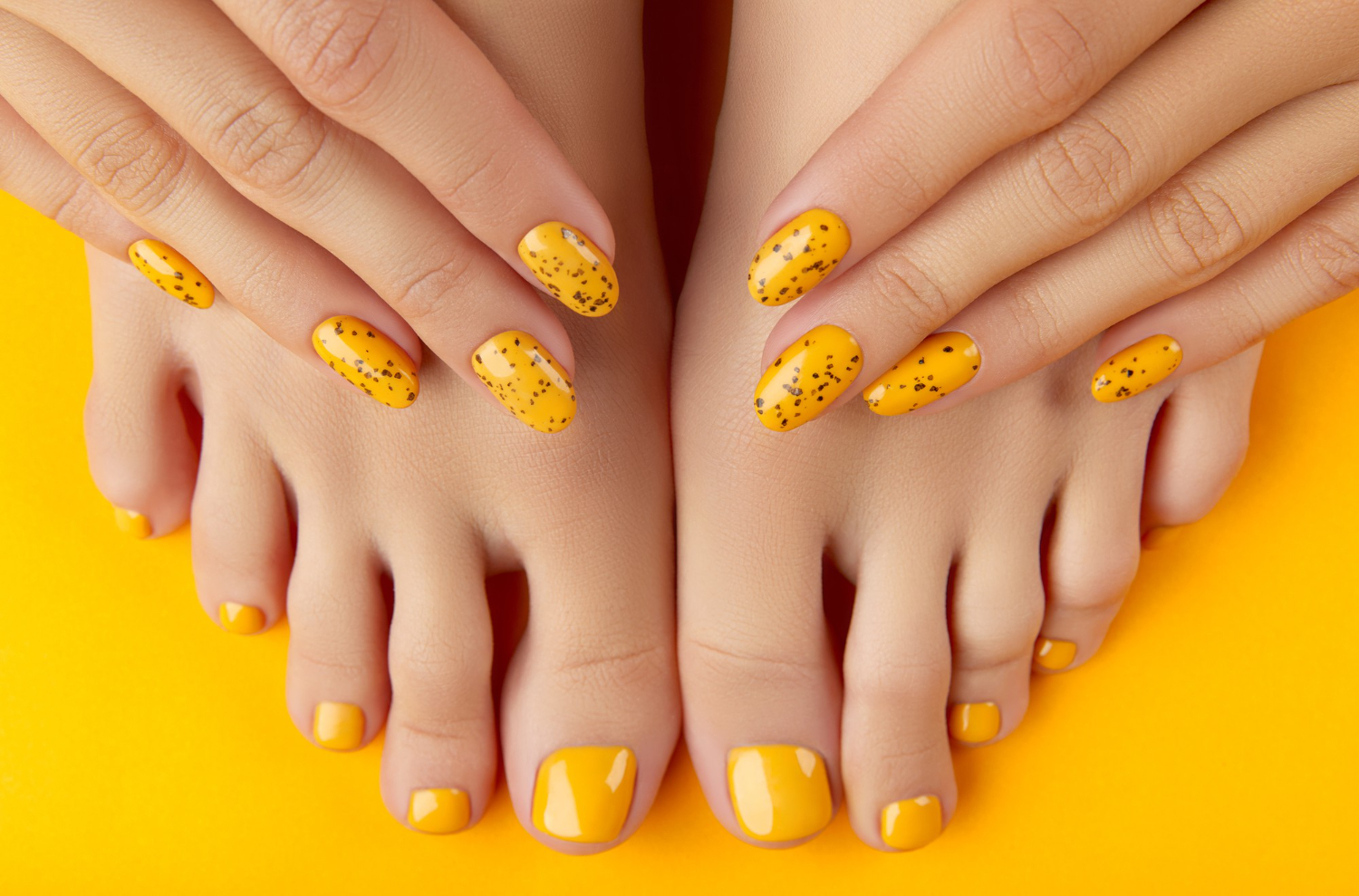When we're in the mood to paint our nails, we reach for nail polish! The practice of painting one's nails dates back to 3000 BCE. There is a
When we’re in the mood to paint our nails, we reach for nail polish!
The practice of painting one’s nails dates back to 3000 BCE. There is archaeological evidence that the Ancient Babylonians used a solid gold manicure set to paint their nails before going into war. People in ancient China used beeswax, egg whites, gelatin, and vegetable colours in their recipes during the Ming Dynasty. Nail polish was being in use to denote social status in Ancient Egypt. It’s also said as lacquer or nail varnish! The lower classes applied nude or light hues, while the upper classes favoured red tones (naturally).
Let’s look at some interesting Nail Polish factoids:
1. Our Nails and Hairs Have a Relationship

Our fingers and toenails are of keratin, which is the same product that makes up our hair. Nails (both fingers and toes) is of the same keratin base substance as our hair, despite their colour and structure differences. That is to say, the same nutrients that are healthy for hair are also good for nails.
2. Automotive Paints

When automotive paint was first produced in the 1920s, a French beauty artist named Michelle Menard attempted to adapt it to manufacture nail polish. Menard was working for Charles Revson, which is now known as Revlon, at the time. In 1932, Revlon launched its first nail paint in salons, followed by drugstores and department stores in 1937.
3. Nails made with Acrylic

A dentist named Fred Slack invented acrylic nails in 1978, and they were first used in 1978. Years before, in 1934, a dentist named Maxwell Lappe invented Nu Nails, an artificial nail made for nail biters.
4. Manicures have a long and illustrious history

When Jeff Pink, the founder of the nail polish brand Orly, began using them to speed up the cosmetics process for actresses changing costumes, he is being given credit with popularizing French manicures in America. However, it is said that Max Factor was the first to offer French manicures in Paris in the 1930s.
5. Car paint is use to make modern nail polish

In 1934, a bottle of Cutex nail paint cost 35 cents.
6. Nail paint bottles that has been opened last roughly two years

When air is added to nail polish after it has been opened for the first time, some chemicals evaporate, changing the varnish’s consistency and formula.
7. The Incas’ Use

The Incas were used to painting drawings and motifs on their fingernails, and many of them had eagle patterns on their fingers.
8. One of the most important components of nail polish
Nitrocellulose cotton, also known as guncotton, is the main ingredient in nail polish. It was once used as an oxidizer or reduced accelerant!!
9. Know why you shouldn’t throw away your nail polish

You should not discard your nail polish, because nail polish is classified as a household hazardous waste by the EPA, you should dispose of any unused bottles at a hazardous waste facility. (However, even the EPA admits that regulating every household is unfeasible, therefore trash generated by typical household activities is exempt.)
Layers of Nail Polish
- The base coat protects, hydrates, and hardens the surface of our nails before applying the coloured lacquer.
- Gel, which provides a long-lasting gleaming effect and cures under a UV lamp or ultraviolet LED, is more difficult to remove and should be done by a professional! There’s a chance you’ll lose nails if you’re not careful.
- The top layer lacquer is the last but not least. It’s a clear liquid lacquer that protects the colour we coated our nails with while also adding a shine!
- There are thirteen different types of nail polish finishes: Shimmer, micro-shimmer, micro-glitter, glitter, frost, lustre, crème, prismatic micro-glitter or shimmer, iridescent, opalescent, matte, duo-chrome, and transparent are some of the terms used.
Your nails may tell you a lot about your health.
The following are some of the indicators:
- Discoloration of the nails bed (blueish colour) – pulmonary illness
- Autoimmune disease with capillaries in the cuticles
- Anemia is indicated by pale nails.
- Thickened nails are caused by fungus infections that spread across the nails bed.
- Melanoma is identified by dark brown/black vertical lines on the nails bed.
- Psoriasis causes depressions and microscopic cracks in your nails.
- Thyroid disorders cause easily broken nails.
- Muehrcke’s lines (horizontal white lines) across the entire nail on numerous fingers – renal illness, liver problems, or a shortage of protein and other nutrients.
Changes in your nails are particularly worth noting because they may reveal information about your overall health. Rather of disregarding your nails until they require cosmetic attention, you should consider providing them with the care they require before they begin to impact your health.
